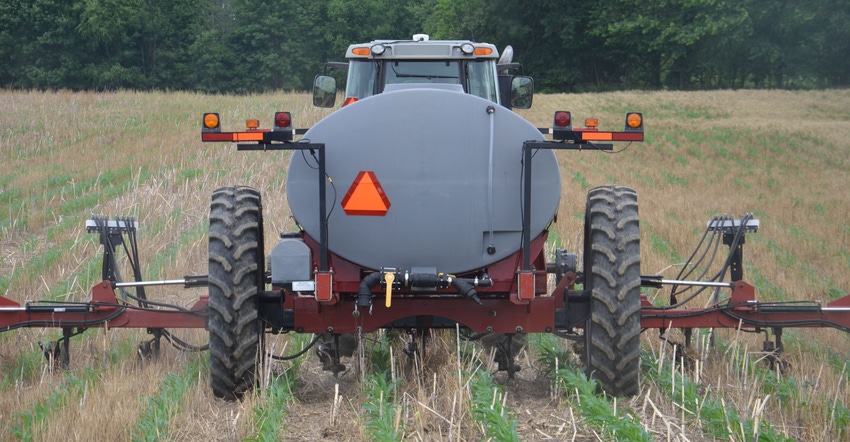
Tim Hassinger, CEO of Intelinair, gets right to the point. “Through a combination of Intelinair’s AgMRI early-season analytics around stand establishment and crop health, coupled with Yara’s science-based nitrogen modeling, we will enhance nitrogen management for corn.”
Growers will receive nitrogen insights related to what’s going on with N automatically during the season. These insights and recommendations will be customized to management zones within the field. That provides firsthand information for making decisions.
You can adjust N rate and timing to fit your budget, weather forecasts and your crop management approach. Visit agmri.com and yara.us.
Getting data right
Garbage in, garbage out. That’s why ever-advancing precision ag is all about — getting correct, accurate data into the system for making appropriate crop decisions down the road. This collaboration again involves Intelinair, but this time with Leaf, who bills itself as a food and agricultural data infrastructure company.
Intelinair sees value in Leaf’s Field Operations and Field Boundary services. Intelinair’s goal is retrieving consistent field operations data from external providers. The technology will associate incoming data with the right grower, farm and field account. Visit withleaf.io.
Corteva focuses on seed
Willie Vogt of Farm Progress visited with Geoff Graham, Corteva vice president of seed development, to learn about plans for seed development. “I feel confident that the refocus on key crops, such as corn, will enable us to accelerate progress and innovation,” Graham told Vogt. Through the refocus, Corteva targets areas with the best opportunity for wins for customers and the company.
Corteva has nine laboratories globally, characterizing genetic material for corn. In Johnston, Iowa, Graham said their process produces 4 million data points per day. When he joined the company 22 years ago, the lab generated a million data points per year.
Corteva is focusing on two main approaches by developing hybrids and varieties. Some of what it has learned in 100 years of working with corn is helping develop hybrid wheat.
The company has already developed a sterile breeding system for wheat. Now, researchers are developing an in-house sterility system so Corteva can ratchet up production of the hybrid wheat system.
Obviously, soybeans lead on varietal development. Now, Corteva will leverage the same technology that resulted in Pioneer A-Series soybeans to deliver similar improvement in cotton. Visit corteva.com. See Corteva focus on seed development.
Aerial applicators, not crop dusters
“Aerial application is just a more accurate definition of what we do now,” says Andrew Moore, CEO of the National Agricultural Aviation Association. Few products go down as “dust” anymore. Instead, they’re precision granules, liquids or cover crop seeds.
That’s not all that has changed, Moore says. It’s not a 9-1-1 rescue business today. Instead, most applications are planned. Today’s aerial applicators use GPS and computer software for precision spraying as much as farmers do.
Airplane makers are upping their game, Moore observes. On average, planes carry about 500 gallons of material, but the Air Tractor 802 has an 800-gallon hopper. Plus, Air Tractor is working on certifying the Air Tractor 1002 with a 1,000-gallon hopper. Check out agaviation.org. See Aerial application adapts to changing needs.
Toward carbon-neutral engines
Agco Power recently announced Core, a new family of engines. While current Agco engines are fully compatible with hydrotreated vegetable oil fuels, bringing them close to carbon neutral, alternative future fuels such as hydrogen and gas require an engine designed for compatibility.
“Alternative fuels of the future such as hydrogen, ethanol, methanol, biogas, as well as electric hybrid applications, set new demands for an engine,” says Juha Tervala, CEO of Agco Power. “The CORE engine platform is designed to enable the use of alternative fuels with further development.”
The new Fendt Vario Gen7 tractor is powered by the first Core engine on the market. It’s touted for excellent low-speed performance. Visit agcocorp.com.
About the Author(s)
You May Also Like




